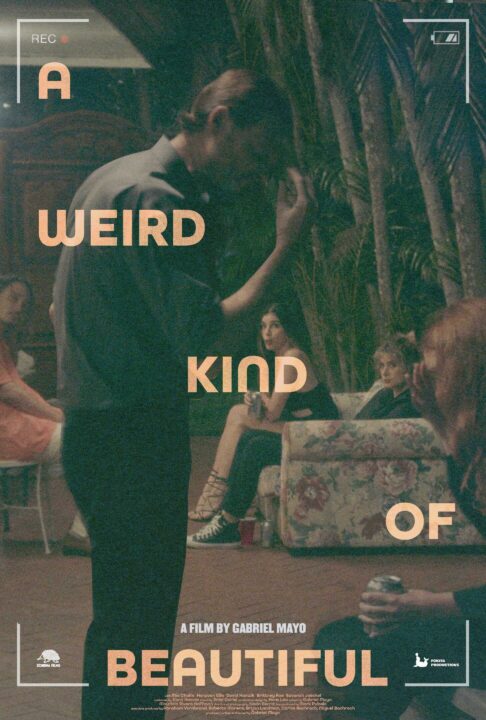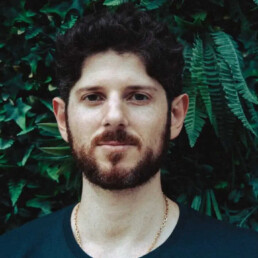Gabriel Mayo, a Peruvian-American writer, director, and producer hailing from Miami, has made a notable debut with his feature film, A Weird Kind of Beautiful. Crafted under the constraints of a micro-budget during the pandemic, Mayo’s ambitious project showcases his ability to create compelling cinema with limited resources. The film, centered around a funeral and a long-overdue reunion, delves into themes of friendship, secrets, and introspection, making it an impactful directorial debut.
In our exclusive interview, Mayo shares insights into his filmmaking approach, blending drama and humor seamlessly while navigating the challenges of constrained budgets and unexpected hurdles. Along with the collaborative efforts of his carefully chosen actors and collaborators (who all wore many hats bringing this production to life), he has brought to life a film that will deeply resonate with audiences. Discover more about this promising filmmaker and his journey by reading our full interview.
It’s a pleasure to meet you, Gabriel! What inspired you to create your new film, A Weird Kind of Beautiful, and how did you bring the story to life?
Gabriel Mayo: I wanted to make my first feature but needed to make something that was in the micro-budget range, so I initially began to come up with ideas for something I could shoot in one location, with a few actors, and with a DV-CAM if I couldn’t get all the money. I began writing it during the pandemic, so shooting outdoors was also necessary.
I then began to figure out what kind of story I could tell within these parameters and had many ideas but once I came up with the main idea that we later see in a flashback – which I won’t reveal so as not to spoil the movie – I began to build the story around that. I wasn’t thinking too much about what I wanted to say, it was through the process of writing and making creative choices to create good drama that all these things I’d been thinking about seeped into the script.
The film’s plot centers around a funeral and a reunion after eight years. What message or theme did you aim to convey through this story, and how did you balance the emotional weight of these scenes with moments of levity and humor?
Gabriel Mayo: I’d be lying if I said that I had an initial message or theme I wanted to convey. It was through the process of writing that I discovered these themes were in my head and I was sort of discovering how I felt about certain things as I was writing it. Yes, then it became obvious it was a story about friendship, the secrets that we keep from each other, and about how we look at the past.
And thank you for pointing out the moments of levity and humor, some people seem to miss those somehow. Once again, it wasn’t a conscious decision to inject humor. I have a dark sense of humor, but life to me is both dramatic and comedic, and can be both at the same time. I never understood the distinction between the genres, to me they feel the same. Sometimes you have more of one than the other, but it feels natural to me to have both.
What was your creative process in developing the film’s visual style and tone?
Gabriel Mayo: I wanted to shift what the camera was doing throughout the movie. I knew we had to continually get different angles so we wouldn’t get bored of seeing the exact same setups for 80 minutes. Although this is a movie that can rely a lot on faces, I also wanted to see the set and this tiny little world the characters inhabit.
So in the beginning we use wider lenses and get to see more, as we progress we go up in focal length but only to a certain extent because we also needed the freedom to move the camera and if we had lenses that were too narrow we wouldn’t have had the space to shoot. I also wanted a deep depth of field for the majority of the movie so we could see characters in the foreground and background. And then towards the end we shoot mostly faces and get closer to the characters.
Indie films often rely on a tight-knit crew. How did you assemble your team, and what was the collaboration process like on set?
Gabriel Mayo: The first person to come on board was Mark Pulaski, who helped me produce the film. We needed people who were down for the cause. It’s a small indie movie, nobody is making what they should be making, they have to come on board because they love the project and want to be part of it and believe in it.
I wish we could’ve paid everyone what they should be making, but if we did, the movie wouldn’t have been made. So it was a matter of finding people that read the script and wanted to be part of the movie because it resonated with them in some way. It was a small production, so on set everyone wore multiple hats because we had limited resources.
How did you approach casting the film? What qualities were you looking for in the actors to portray these complex characters?
Gabriel Mayo: Casting and working with the actors was the most important aspect of this movie. I knew people had to almost believe the actors weren’t actors, but were the real-life people they’re supposed to represent. It should feel like you’re a fly on the wall this one evening with this group of friends. I was looking for very naturalistic acting.
To a degree I wanted it to have the same feeling like when I watched the movie Kids. None of them were actors and they seemed so real and unique. We dedicated a lot of time, more than a year, to casting and finding the right actors. Again, if we’re going to be staring at their faces for 80 minutes you better believe every word they say and action they take. It was challenging but we were lucky to find all of them.
How did you work with the cast to create authentic, compelling performances in a large ensemble environment?
Gabriel Mayo: We rehearsed the material for nine days before we shot anything. I had done a long casting process and some extensive readings with some of them prior. We spent the first few days of rehearsal going over the script line by line, making sure we were all on the same page about it. There were lots of questions and discussions that were part of the process but after the first few days we had covered a lot of ground.
We went in order and split up the script in the 8 or 9 different parts and focused on each one of these parts. After the first 4 or 5 days we went on set and started blocking. I think we finished blocking the last 10min of the movie on the last day of rehearsal because we were going in order and going over it again and again as we went along. By the time we got to day one of production they knew their characters really well, the dialogue, the blocking, etc… and they had also become really close friends in the process, which definitely helps. You see real friendship on screen.

What were your biggest challenges as an indie filmmaker in bringing A Weird Kind of Beautiful to life?
Gabriel Mayo: The uniqueness of the project made everything challenging because we had to do many things that are uncommon in an indie production. Finding five great actors who could deliver the performances you saw, given our resources, was incredibly hard. We spent a lot of time looking for them and, as I mentioned earlier, we went through a rehearsal period that was crucial and I had to fight for it because many people involved, not only did they not see the benefit, but didn’t see the necessity.
I’d get questions like, “Why can’t we rehearse for a couple of days? Why not just a week?” Making a movie is convincing everyone of your vision and of your way of doing things, and none of them had worked like that before. Shooting it too. It was a challenge to get all the setups we needed, and it was challenging for the actors to memorize so many lines and be ready to perform for ten minutes straight. The only way to address that was through preparation.
Do you have any memorable moments or behind-the-scenes stories from set?
Gabriel Mayo: Yeah, we had rehearsed the movie and knew how everything was going to play out, but there were two moments with Crux (who plays Eric) – one moment where he gets into an argument with Ivan, and later another between him and his fiancee – where something happened on those two nights where he tapped into something he hadn’t before and delivered an emotional performance that wasn’t even in the script and turned out to be better than I had originally imagined. Of course we had the night where it rained, our lights blew up and we couldn’t shoot for the rest of the evening, but who wants to hear the negative stuff?
Can you talk about the funding and budgeting process for the film? How did you secure financing, and what strategies did you use to make the most of your budget?
Gabriel Mayo: The funding was a combination of putting my own money, some investors came in, and then asking friends and family for money. Overall it wasn’t a huge budget, so between all those I was able to get enough to make the movie. It was still hard because we often didn’t have things that we needed. Many of us had to wear many hats, we had to ask favors, and tried to get what we could for cheap or nothing. The typical indie way of doing things.
What do you hope audiences will take away from watching the film, both in terms of its narrative impact and emotional resonance?
Gabriel Mayo: I wouldn’t want to impose an answer on the audience or tell them how they should feel or think. I’m often surprised to hear of people who have watched it, or read the script, because they all have their own interpretation. It’s always different how it resonates with them on an emotional and personal level. I do hope people find the movie engaging and it resonates with them in a way that makes them think about their own lives. Ultimately, like Albee once said, when people leave the theater they shouldn’t be thinking about where they parked their car. I agree with that sentiment and that’s the only thing I can hope for.
What advice would you give aspiring indie filmmakers looking to create their own feature films, based on your experiences?
Gabriel Mayo: Find a way to make something on your own with the resources that you have. Build a script around that. Stick to your vision and your way of doing things while at the same time be willing to accept other opinions, but only change what you had planned if the alternative gets you more excited than what you had originally planned. And learn how to write well before you shoot your first feature, you may not get another chance to make another one.

